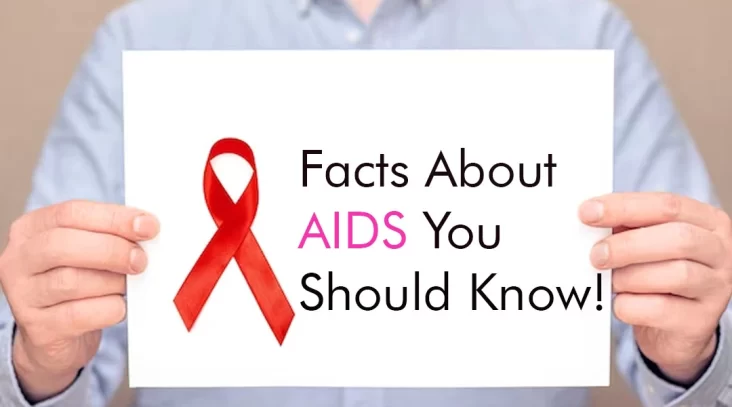AIDS (Acquired Immunodeficiency Syndrome) is an advanced stage of HIV (Human Immunodeficiency Virus) infection. HIV weakens the immune system, making individuals susceptible to infections and diseases. AIDS is diagnosed when the immune system is severely damaged, with a CD4 cell count below 200 or the occurrence of specific opportunistic infections. Common symptoms include weight loss, fever, and persistent fatigue. While there’s no cure for AIDS, antiretroviral therapy (ART) can control HIV, slowing disease progression. Prevention involves safe practices, condom use, and early testing. Global efforts focus on treatment accessibility, stigma reduction, and advancing HIV/AIDS research.
Let us look at some facts about AIDS you should know!
- HIV Transmission:
HIV primarily spreads through unprotected sexual intercourse, sharing contaminated needles, and from an infected mother to her child during childbirth or breastfeeding. It can also be transmitted through blood transfusions with contaminated blood or organ transplants, although such cases are rare due to rigorous screening processes.
- Global Impact:
Since the beginning of the AIDS epidemic in the 1980s, approximately 36 million people have died worldwide, and about 38 million people were living with HIV as of 2020. Sub-Saharan Africa has been disproportionately affected, with nearly two-thirds of all people living with HIV residing in the region.
- HIV/AIDS Stigma:
Stigma and discrimination against people living with HIV/AIDS remain significant barriers to prevention, treatment, and care. This can lead to reluctance to seek testing and treatment, perpetuating the spread of the virus.
- HIV Testing and Diagnosis:
Early detection is crucial for effective management. HIV testing is widely available, including confidential testing and counselling services. Modern testing methods provide quick and accurate results, allowing individuals to know their status and seek appropriate medical care.
- Antiretroviral Therapy (ART):
Antiretroviral drugs are a cornerstone of HIV/AIDS treatment. These medications suppress the replication of the virus, allowing the immune system to recover. Consistent use of ART can help people with HIV lead healthy lives, reduce the risk of transmission to others, and slow the progression of AIDS.
- Prevention Strategies:
Condom use during sexual intercourse remains one of the most effective methods to prevent HIV transmission. Pre-exposure prophylaxis (PrEP) involves taking antiretroviral medications before potential exposure to HIV, providing an additional layer of protection, especially for high-risk individuals.
- Mother-to-Child Transmission Prevention:
Through effective medical interventions, the risk of mother-to-child transmission can be significantly reduced. These interventions include the use of antiretroviral drugs during pregnancy, labour, and breastfeeding.
- No Cure, But Manageable:
While there is currently no cure for HIV/AIDS, the condition is manageable with proper medical care. People living with HIV can lead long and healthy lives with access to appropriate treatment and support.
- Vaccine Development:
Ongoing research seeks to develop an effective HIV vaccine. Although challenges exist due to the virus’s ability to mutate rapidly, progress is being made in understanding the immune response and developing potential vaccines.
- Social and Economic Impact:
Beyond its health implications, HIV/AIDS has profound social and economic consequences. The epidemic has affected families, communities, and entire nations, particularly in regions with high prevalence.
In conclusion, understanding the facts about AIDS is crucial for effective prevention, treatment, and support for those affected. While progress has been made, continued efforts in education, research, and global collaboration are necessary to ultimately control and eliminate the impact of HIV/AIDS worldwide.


One Comment
Pingback: Facts About AIDS You Should Know! – Sujata Birla Hospital